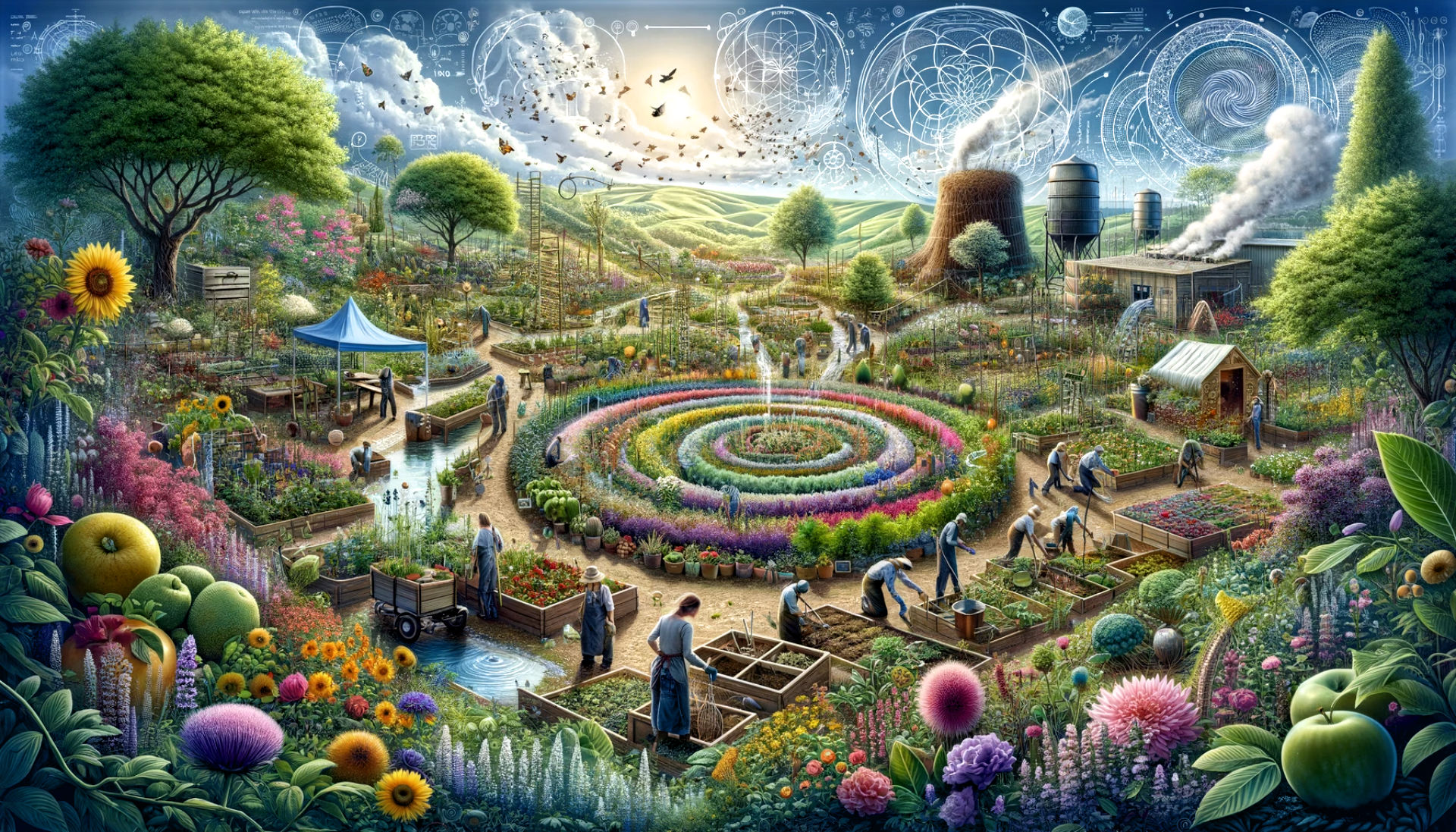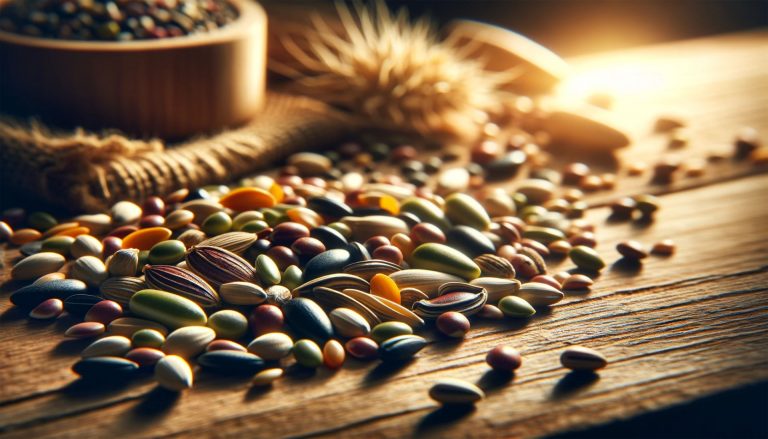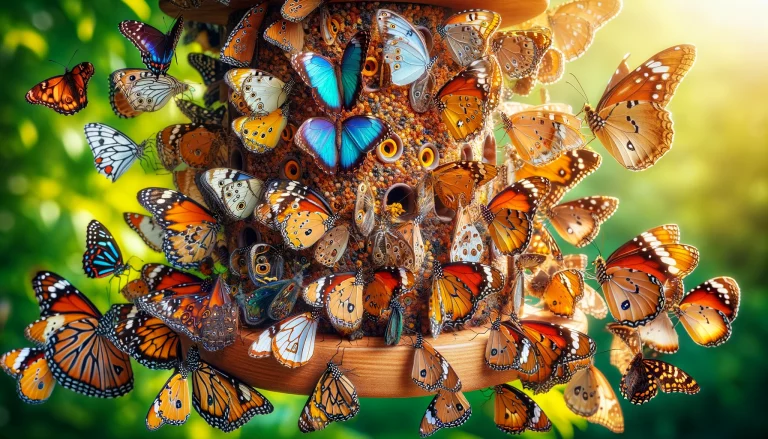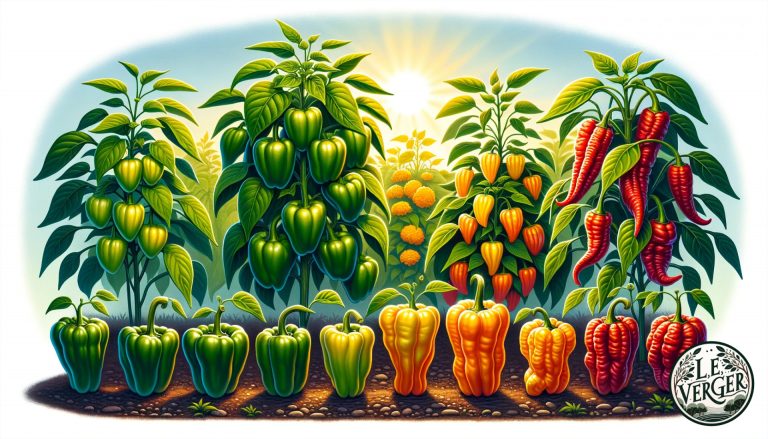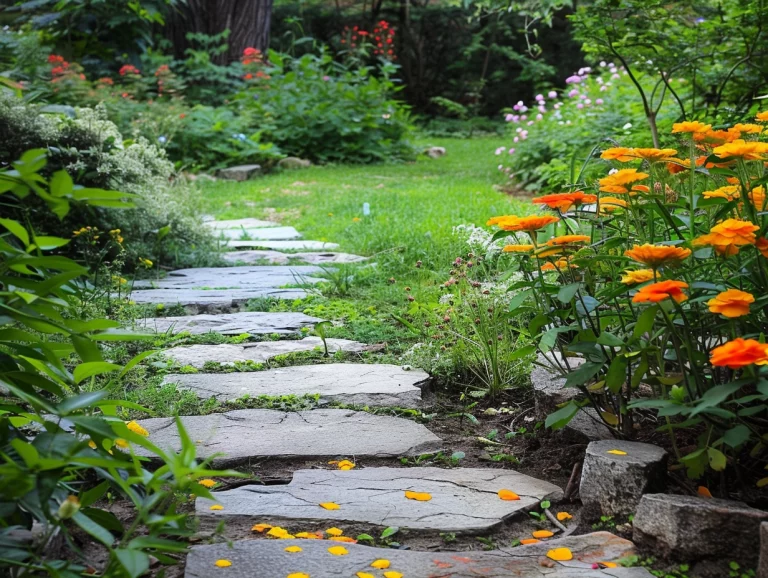Biodynamic Gardening: Aligning with Nature’s Rhythm
Unlock the magic of biodynamic gardening, where cosmic forces and soil secrets come alive. Learn how to nurture a thriving garden ecosystem today!
Introduction to Biodynamic Gardening
In the bustling gardening world, where techniques and trends continually evolve, one approach has stood the test of time and nature’s scrutiny: biodynamic gardening. This captivating method goes beyond conventional practices, inviting gardeners to dance in harmony with the rhythms of the Earth and the cosmos.
At its heart, biodynamic gardening is about more than just growing vegetables or flowers; it’s a holistic way of cultivating the land that embraces age-old wisdom and combines it with modern sustainability. In this article, we’ll delve into the captivating world of biodynamic gardening, exploring its principles, practices, and the profound connection it fosters between gardeners and the natural world.
Join us on this journey as we uncover the secrets of biodynamic gardening and discover how aligning with nature’s rhythm can yield bountiful and vibrant gardens while nurturing the very soul of the Earth.
Understanding Biodynamic Gardening
Biodynamic gardening is a philosophy deeply rooted in the belief that the Earth is a living organism, and everything is interconnected. To truly grasp this approach, we must first understand its origins, principles, and how it differs from conventional gardening methods.
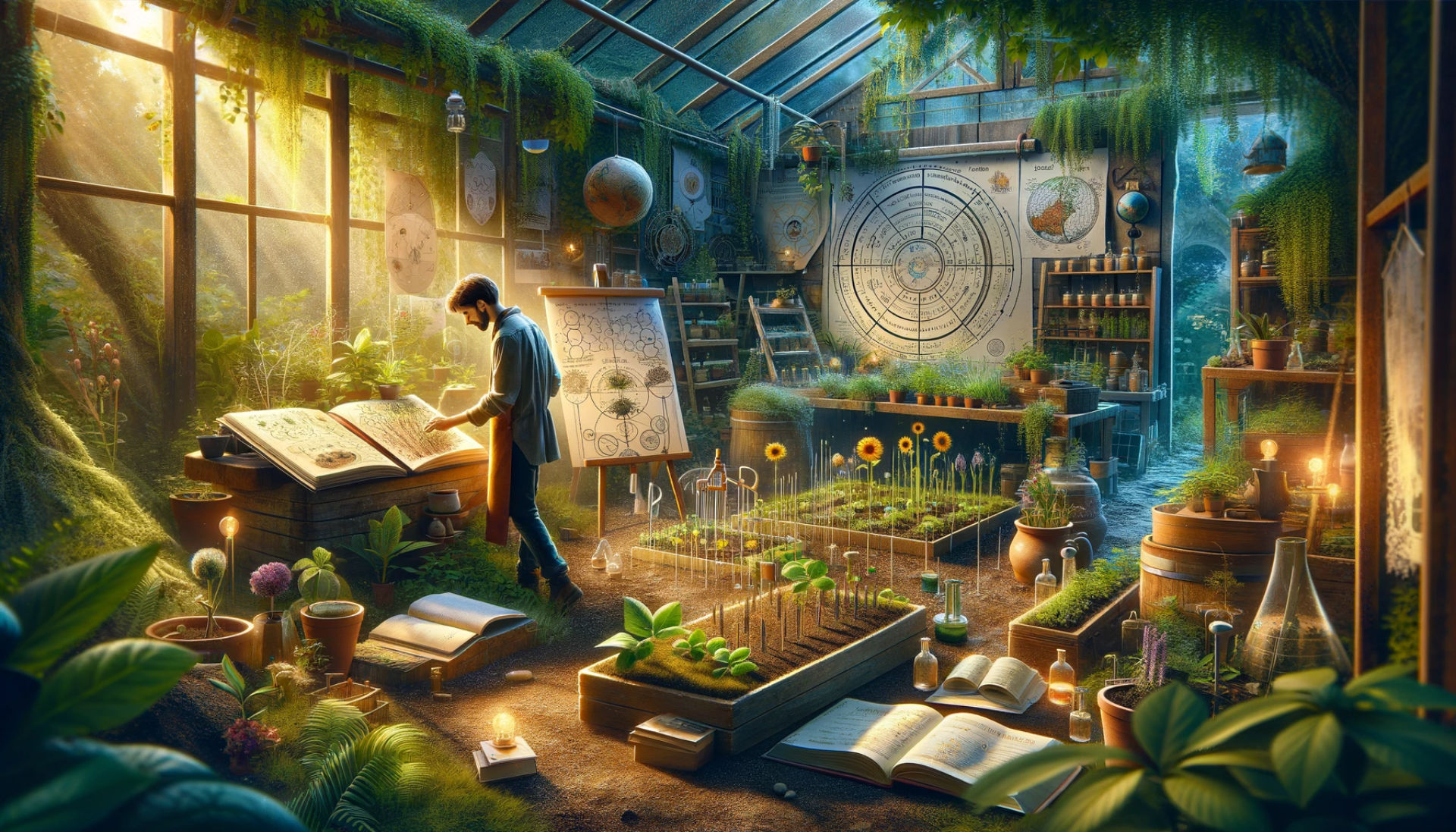
Defining Biodynamic Gardening
At its core, biodynamic gardening is an approach that treats the garden as a self-sustaining ecosystem. It aims to work with nature rather than against it. Unlike conventional gardening, which often relies on synthetic chemicals and mechanical interventions, biodynamic gardening strives to create a harmonious balance in the garden.
Origins and Philosophy
Biodynamic gardening has its roots in the teachings of Austrian philosopher and scientist Rudolf Steiner in the early 20th century. Steiner emphasized the importance of holistic practices, considering the farm or garden as a single organism. He introduced the idea of cosmic influences and the interconnectedness of all life forms, which are fundamental to biodynamic principles.
How It Differs from Conventional Gardening
One of the key distinctions is the rejection of synthetic fertilizers and pesticides. Biodynamic gardeners believe that these chemicals disrupt the delicate balance of the garden and harm the environment. Instead, they focus on enhancing soil health through natural methods and using herbal remedies to manage pests and diseases.
The Cosmic Connection
In the realm of biodynamic gardening, the celestial world holds a profound influence over the garden’s rhythm and vitality. From the waxing and waning of the moon to the positions of planets and stars, cosmic forces play a pivotal role in guiding planting and harvesting practices.
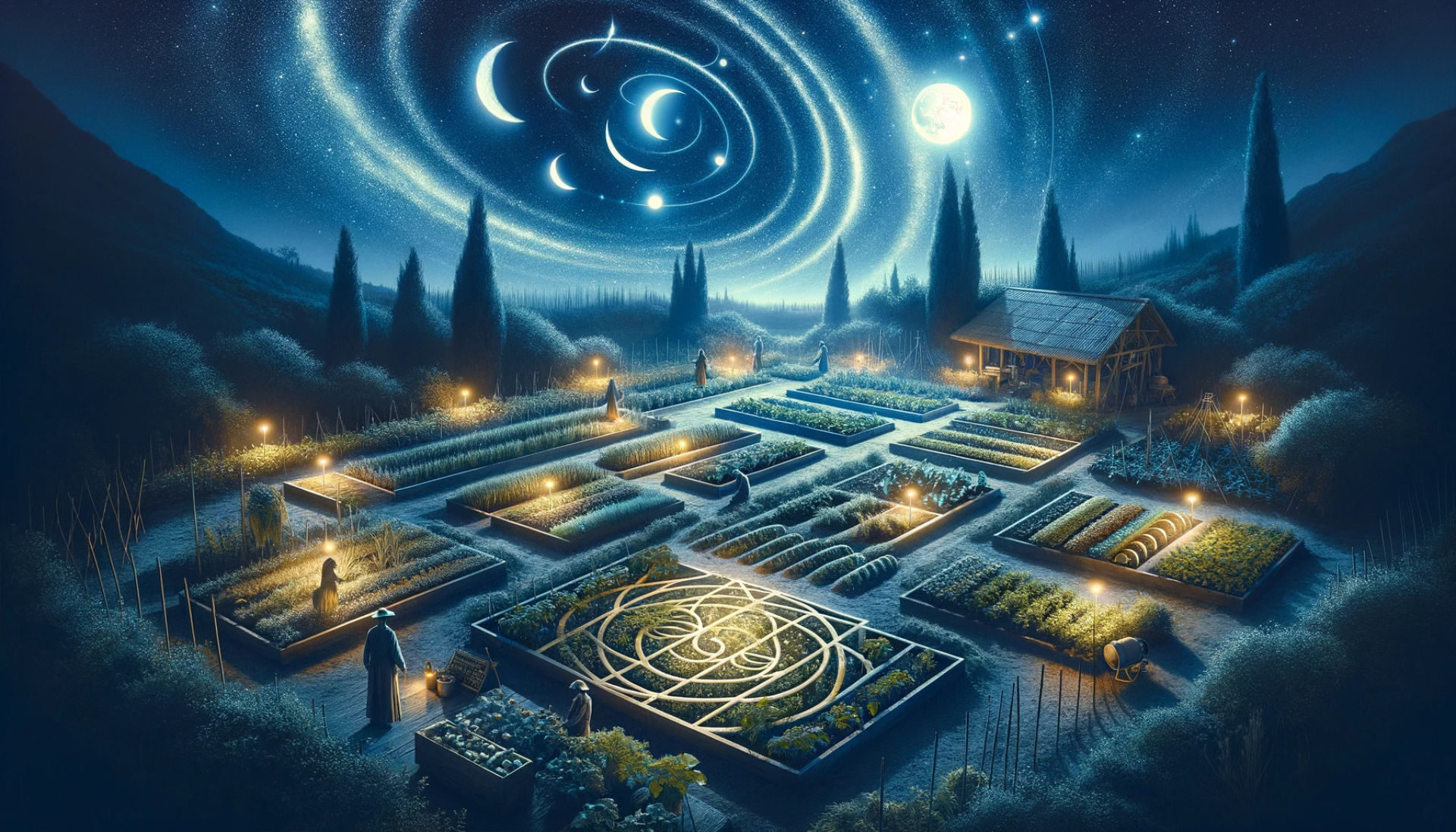
The Lunar Dance
The moon, with its gentle sway through phases, becomes the gardener’s silent partner in biodynamic gardening. The lunar calendar serves as a trusted guide for planting and harvesting crops. Planting during specific lunar phases is believed to enhance growth and yield. For example, sowing seeds during a waxing moon is thought to encourage vigorous upward growth.
Starry Wisdom
Beyond the moon, biodynamic gardeners also pay heed to the positions of planets and stars. Each celestial body’s alignment carries unique significance. For instance, the position of constellations like Aries or Leo may influence specific crops, while others may be best planted when certain planets are in alignment.
Working in Harmony
The essence of biodynamic gardening lies in this cosmic harmony. Gardeners who follow these celestial cues are said to be in sync with the Earth’s natural rhythms. It’s a profound connection that transcends the mundane and brings a sense of wonder to the garden.
Preparing Biodynamic Preparations
Biodynamic gardening is not just about celestial connections; it’s also about the art of preparing and applying biodynamic preparations to enrich the soil and foster plant vitality. These preparations are like magic potions for your garden, created from natural ingredients.
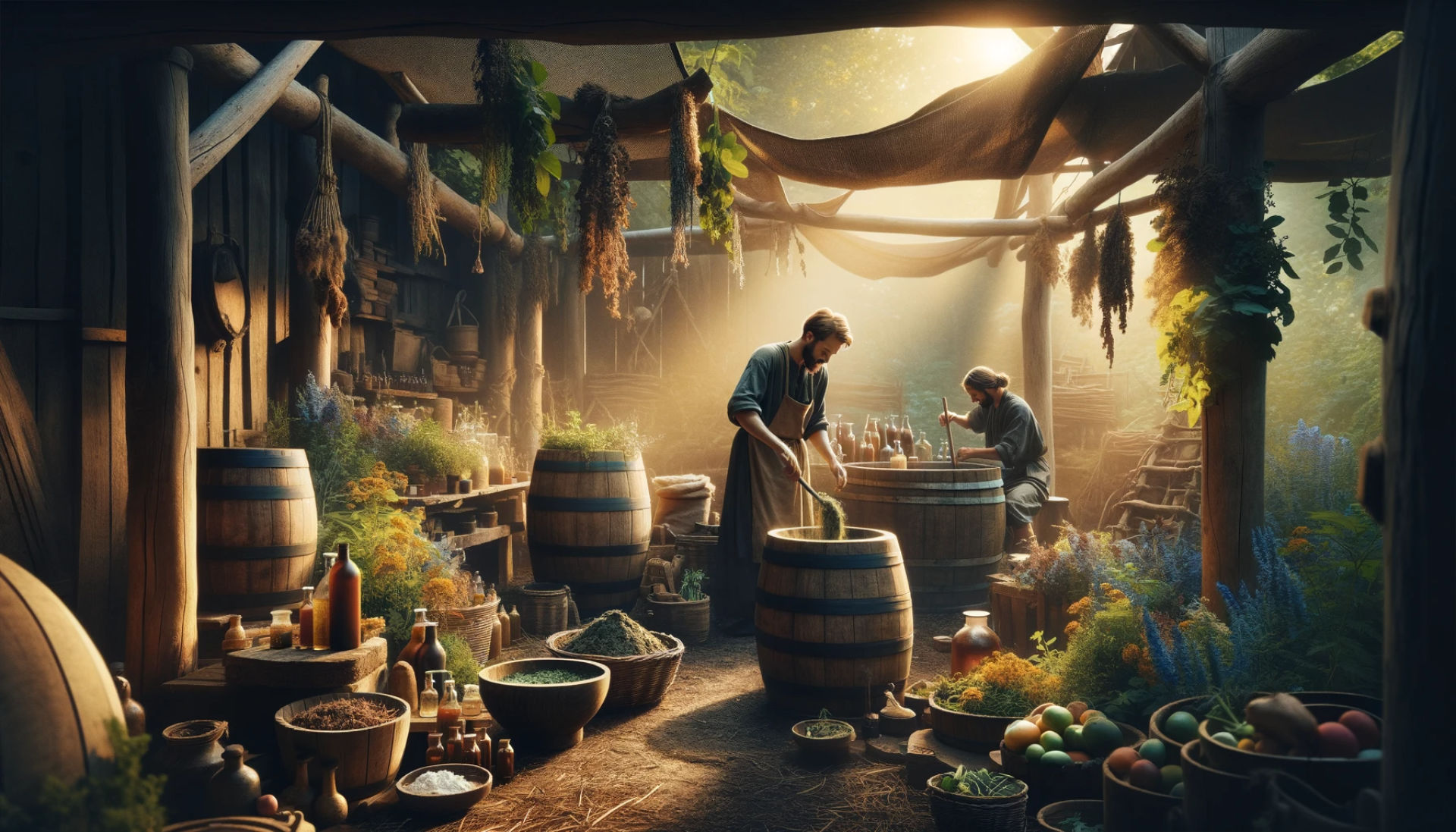
The Magic of Biodynamic Preparations
Biodynamic preparations are a set of nine specific substances used to enhance soil and stimulate plant growth. They include ingredients like chamomile, stinging nettle, and valerian. These substances are transformed into potent preparations through a series of processes, including fermentation and dilution.
Improving Soil Fertility
One of the primary goals of biodynamic preparations is to promote soil fertility. They help create a vibrant and balanced soil ecosystem rich in beneficial microorganisms. This healthy soil is the foundation for robust plant growth and nutrient-rich produce.
Application Techniques
Applying biodynamic preparations involves careful timing and methods. Gardeners often use a cow horn to bury these preparations in the soil, allowing them to interact with the Earth’s energies over time. It’s a ritualistic aspect of biodynamic gardening that connects the gardener deeply with the land.
The Alchemy of Gardening
Biodynamic gardeners see themselves as alchemists, working in harmony with nature’s forces to transform their gardens into thriving ecosystems. It’s a beautiful blend of science and spirituality, where the Earth is both laboratory and canvas.
In the following section, we’ll explore the practical aspects of planting and crop rotation in biodynamic gardening, uncovering the secrets of timing and harmony. Stay with us on this journey of discovery.
Planting and Crop Rotation
In the world of biodynamic gardening, timing is everything. The alignment of your planting schedule with lunar and seasonal calendars can make a world of difference in the health and yield of your crops. Let’s delve into the art of planting and the wisdom of crop rotation in biodynamic gardening.
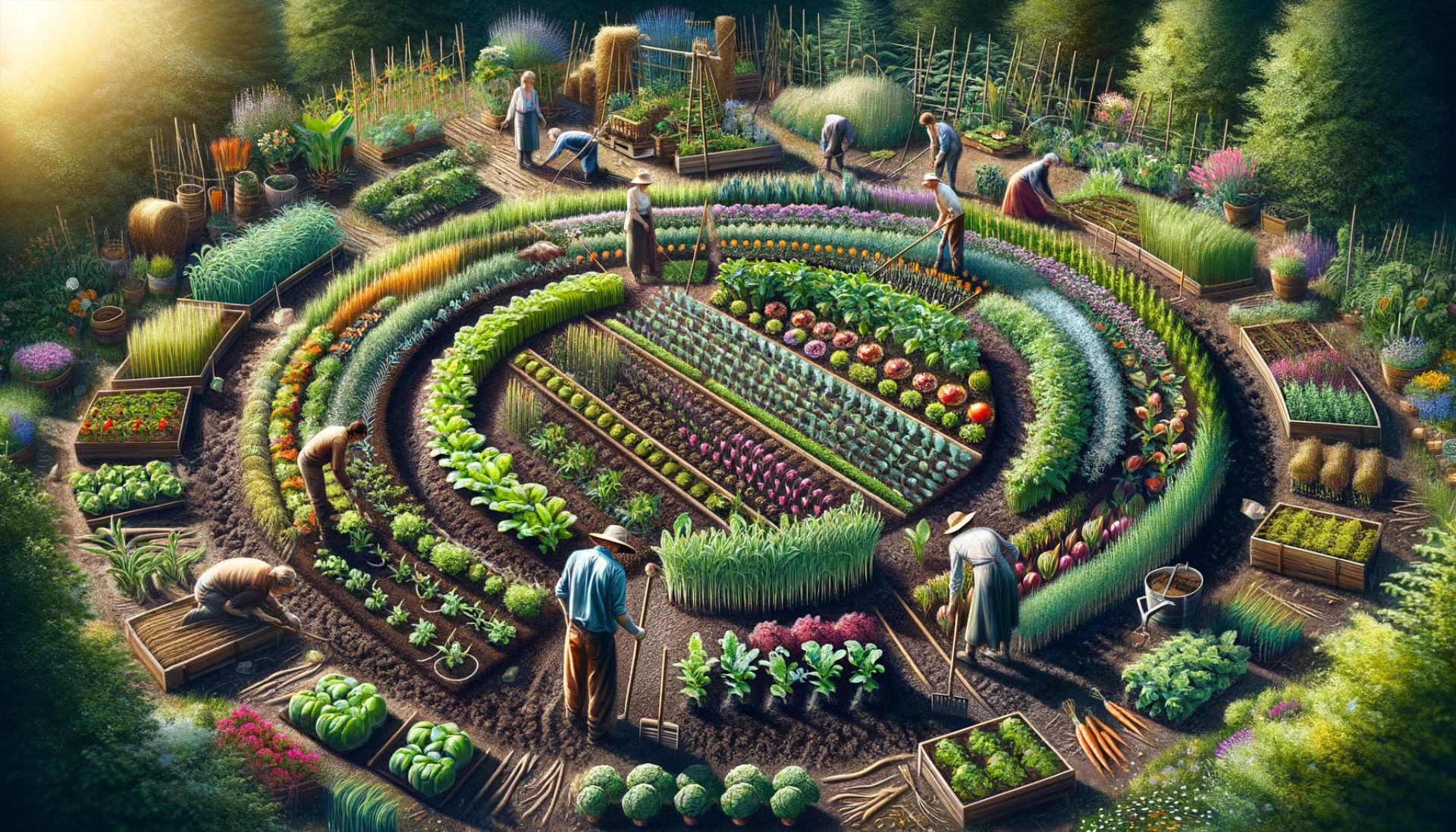
Lunar Planting Calendar
Biodynamic gardeners closely follow the lunar calendar when deciding when to plant. Different phases of the moon are believed to influence plant growth. For example, planting leafy greens during a waxing moon is thought to promote lush foliage. Understanding these lunar rhythms can lead to healthier and more productive plants.
Seasonal Synchrony
Beyond the moon, biodynamic gardeners also consider the changing seasons. Each season brings its own set of crops that thrive during specific weather conditions. Understanding the seasonal shifts allows gardeners to choose the right crops for each time of year, promoting a balanced and diverse garden.
Crop Rotation
Crop rotation is a fundamental practice in biodynamic gardening. It involves changing the location of crops from season to season to prevent soil depletion and the buildup of pests and diseases. This sustainable approach maintains soil health and ensures a variety of produce throughout the year.
Companion Planting
Biodynamic gardeners often use companion planting techniques to create a harmonious ecosystem within the garden. Certain plants are known to benefit each other when planted together, deterring pests or enhancing nutrient uptake.
Pest and Disease Management
In biodynamic gardening, the approach to pest and disease management takes a natural and holistic turn. Instead of relying on synthetic chemicals, biodynamic gardeners harness the power of nature to protect their plants.
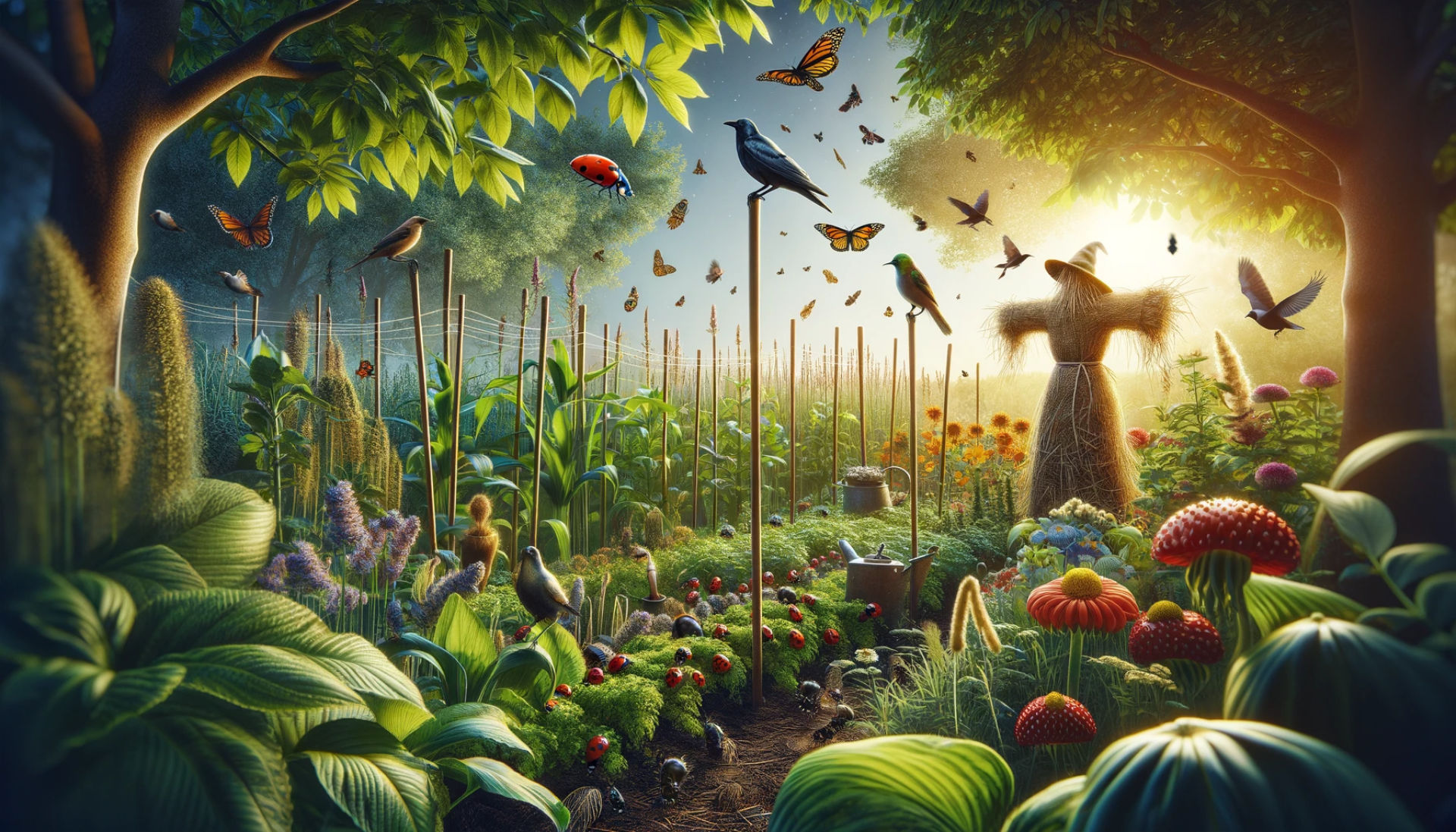
Natural Pest Control
Biodynamic gardeners embrace the concept of biodiversity to deter pests. By planting a diverse range of crops and flowers, they create an ecosystem that attracts beneficial insects and predators. Ladybugs, lacewings, and birds become allies in keeping garden pests in check.
Companion Planting
Companion planting is a key strategy in biodynamic gardening. Certain plants, when grown together, can deter pests or enhance each other’s growth. For instance, planting marigolds alongside tomatoes can help repel nematodes. It’s a symbiotic relationship that nature itself orchestrates.
Herbal Remedies
When pests do make an appearance, biodynamic gardeners often turn to herbal remedies. Homemade concoctions using garlic, neem oil, or hot pepper sprays can effectively deter unwanted insects while being safe for the environment.
Healthy Soil, Healthy Plants
Biodynamic gardening places a strong emphasis on soil health as the foundation for pest and disease resistance. A well-balanced and fertile soil ecosystem supports strong and resilient plants that are less susceptible to infestations.
By adopting these natural methods, biodynamic gardeners create a thriving and resilient garden that coexists harmoniously with nature.
Soil Health and Biodynamic Practices
At the heart of successful biodynamic gardening lies a deep commitment to soil health. Healthy soil is the cornerstone of a thriving garden, and biodynamic practices are designed to create and maintain a fertile and balanced soil ecosystem.
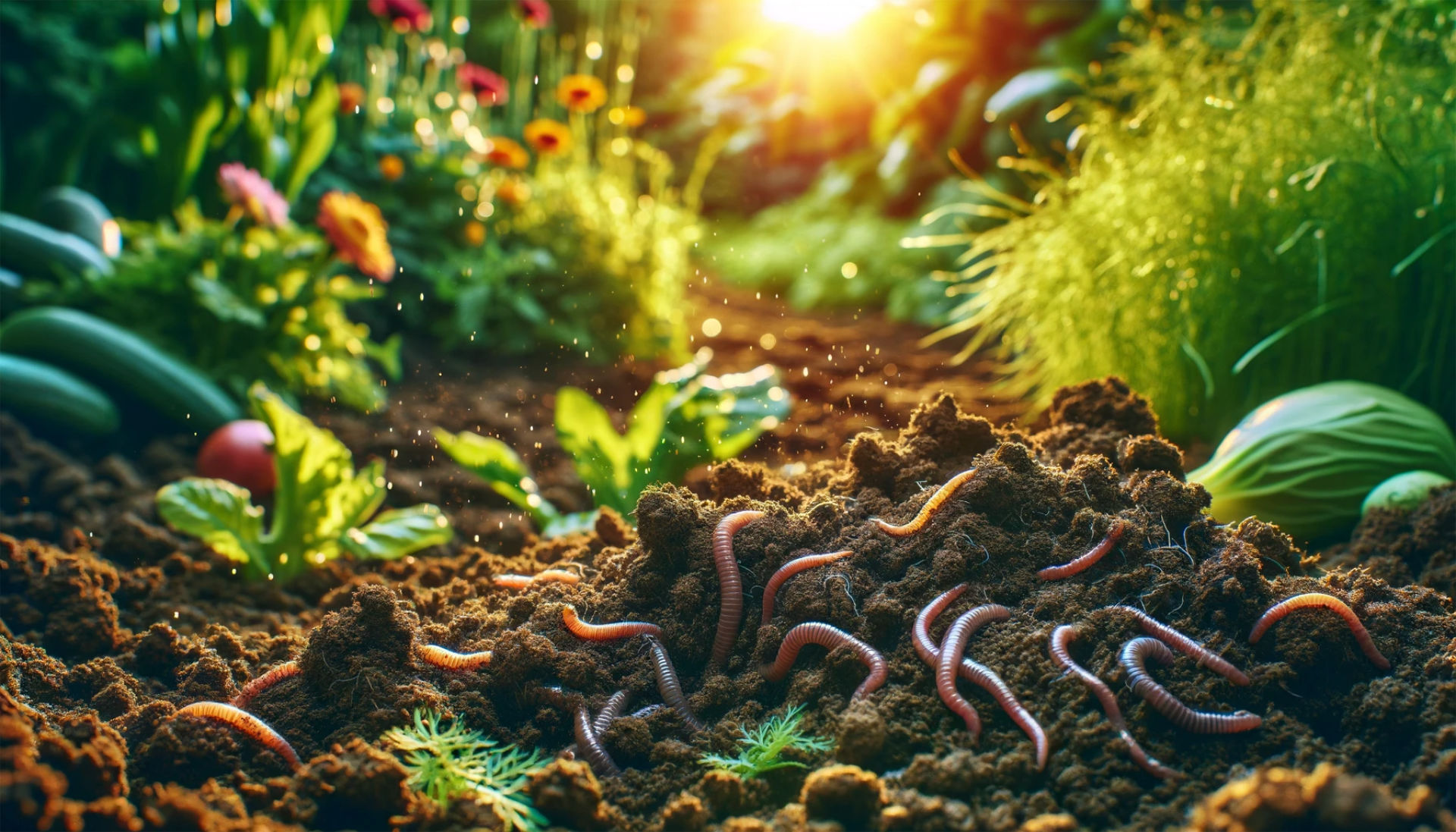
The Importance of Soil Health
Biodynamic gardeners understand that the quality of the soil directly impacts plant vitality. Healthy soil teems with beneficial microorganisms, earthworms, and fungi that break down organic matter, making nutrients available to plants. It’s a living, breathing ecosystem beneath our feet.
Cover Cropping
Cover cropping is a common practice in biodynamic gardening. Gardeners plant specific cover crops like clover or vetch between the main crops. These cover crops protect the soil from erosion, suppress weeds, and add valuable nutrients when they are eventually turned into the soil.
Compost and Organic Matter
Biodynamic gardeners are passionate composters. They view compost as black gold for the garden. Compost enriches the soil with organic matter, improves its structure, and enhances its water-holding capacity. It’s a natural way to provide essential nutrients to plants.
Balancing Soil Ecosystem
Biodynamic practices aim to create a balanced soil ecosystem. By avoiding synthetic chemicals and nurturing the soil with organic matter, the garden becomes resilient against diseases and pests. Healthy soil also contributes to better-tasting and more nutrient-rich produce.
As we move forward, we’ll explore the art of harvesting and storing biodynamic produce, ensuring that the fruits of your labour remain as vibrant and nourishing as the garden itself.
Harvesting and Storing Biodynamic Produce
In biodynamic gardening, the art of harvesting and storing produce is just as crucial as the cultivation itself. Aligning with nature’s rhythms continues to play a role even when it’s time to reap the rewards of your garden.
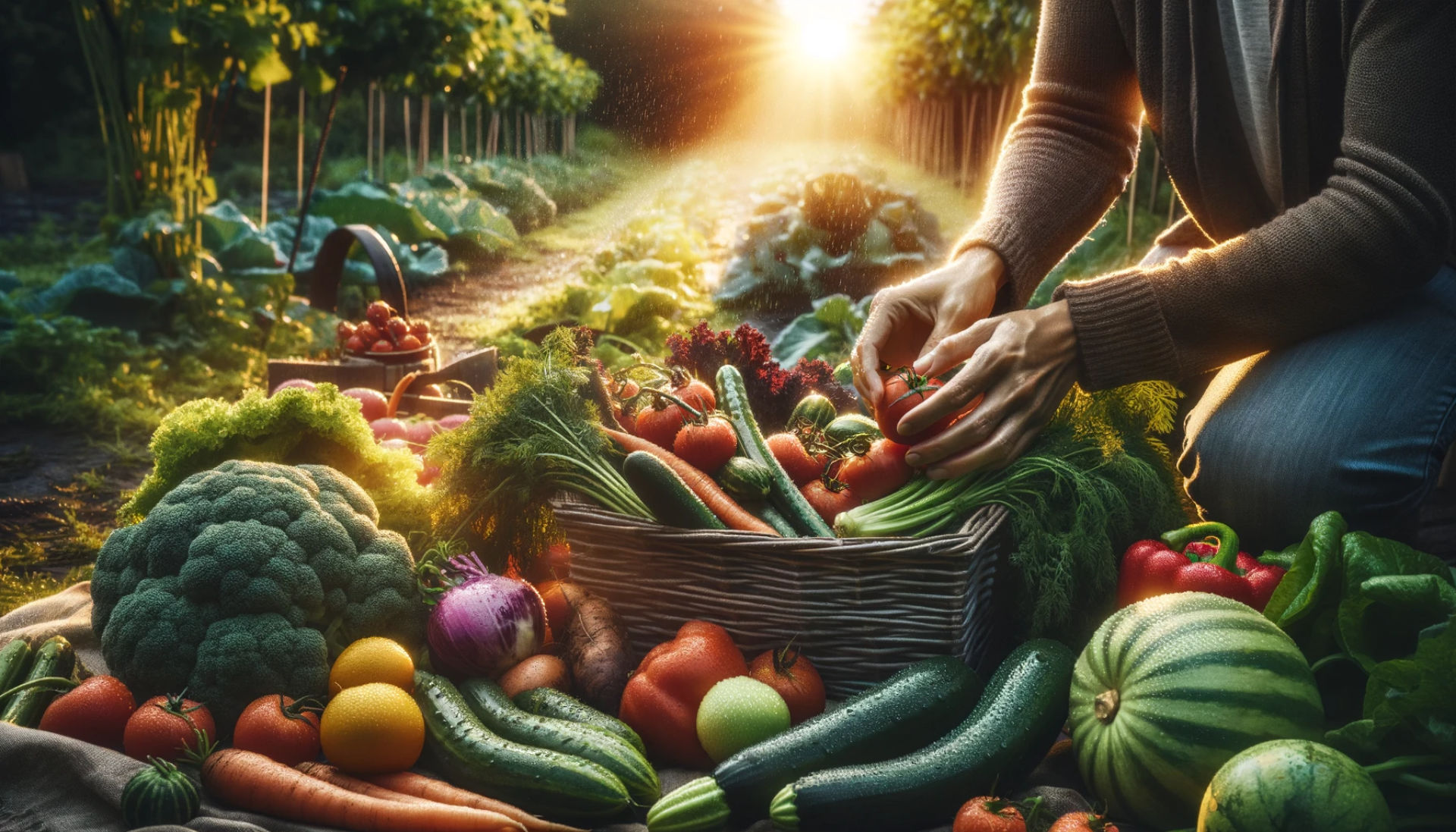
Harvesting by the Moon
Biodynamic gardeners pay attention to the lunar calendar when deciding when to harvest. Different lunar phases are believed to influence the quality and taste of produce. For example, fruits and root crops are often harvested during a waning moon, as it’s believed to enhance flavour and longevity.
Gentle Harvesting Techniques
Biodynamic gardeners take care to use gentle harvesting techniques to minimize damage to plants and produce. Using sharp, clean tools and harvesting at the right time ensures that your fruits and vegetables are at their peak of flavour and nutrition.
Storing with Care
Proper storage is vital to keep biodynamically grown produce fresh and nutritious. Cool, dark, and well-ventilated storage areas are ideal for preserving the vitality of your harvest. Many biodynamic gardeners use root cellars or cool pantries to store their crops.
Preserving the Vitality
Biodynamic produce is renowned for its freshness and flavour. By harvesting and storing with care, gardeners can extend the vitality and nutritional value of their crops, allowing the garden’s bounty to nourish the body and soul throughout the year.
The Benefits of Biodynamic Gardening
Biodynamic gardening offers a multitude of benefits, not only for the garden itself but also for the environment and individuals who practice it. Let’s take a closer look at why this approach is gaining popularity and recognition.
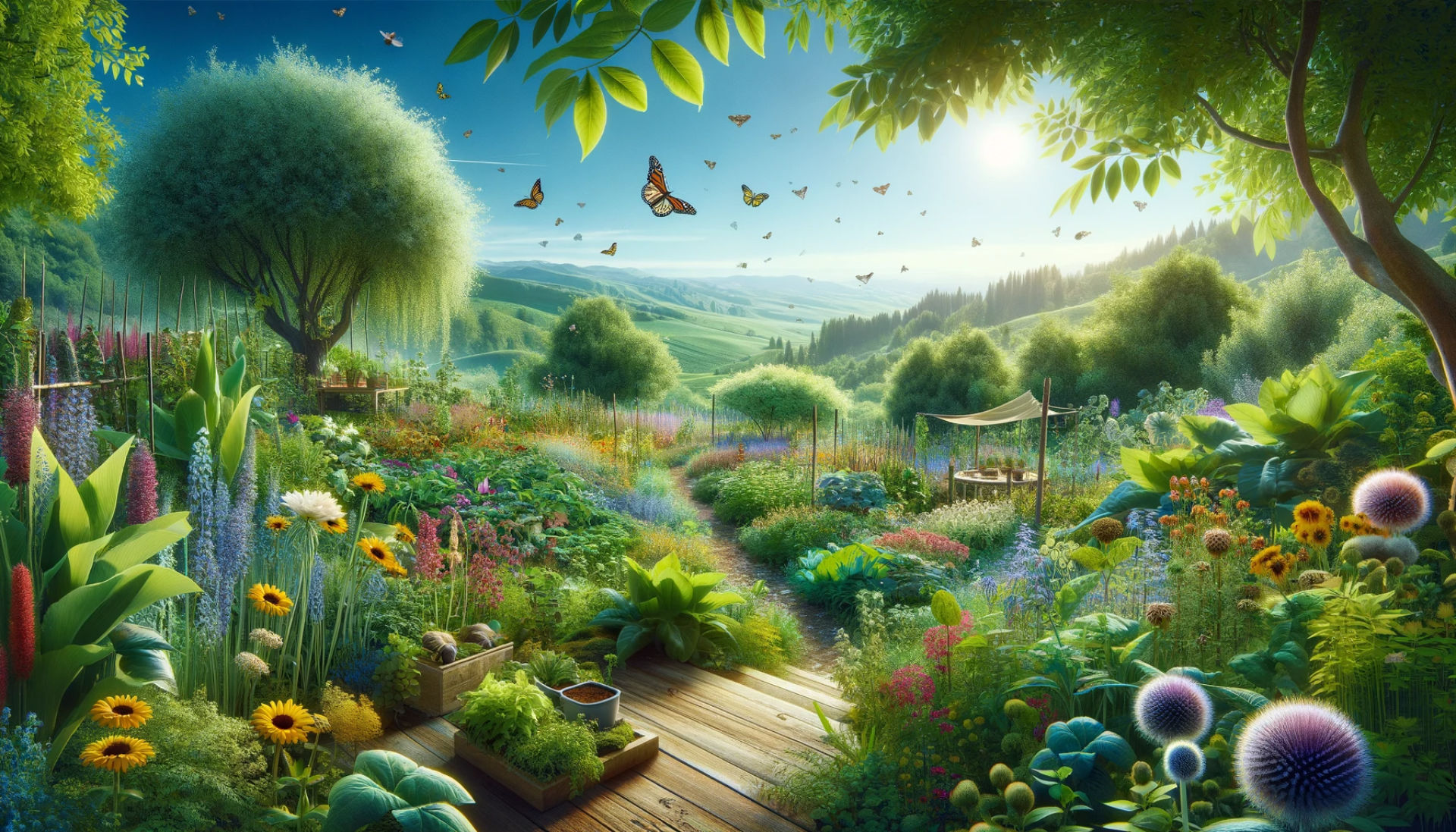
Environmental Sustainability
Biodynamic gardening is inherently sustainable. By avoiding synthetic chemicals and focusing on biodiversity and soil health, it promotes a healthy and balanced ecosystem. This approach helps reduce environmental pollution and supports wildlife, making it a greener choice for gardening.
Nutrient-Dense Produce
The emphasis on soil health in biodynamic gardening leads to nutrient-rich produce. Fruits and vegetables grown in such conditions are known to be more flavourful and packed with essential vitamins and minerals. It’s a way to enjoy the true taste of nature.
Holistic Well-being
Biodynamic gardening is not just about growing food; it’s a holistic practice that connects individuals with the natural world. Gardening in alignment with nature’s rhythms can be a deeply fulfilling and spiritually enriching experience.
Sustainability and Resilience
By fostering a resilient and biodiverse garden ecosystem, biodynamic gardeners are less reliant on external inputs and interventions. This self-sufficiency makes gardens more resilient to environmental challenges and changes.
Conclusion
In the enchanting world of biodynamic gardening, we’ve embarked on a journey to align with nature’s rhythm, and the rewards are bountiful. This holistic approach, rooted in ancient wisdom and cosmic harmony, offers a wealth of benefits for both the environment and individuals.
From understanding the origins and philosophy of biodynamic gardening to practising lunar planting and nurturing soil health, we’ve explored the intricacies of this unique gardening method. We’ve witnessed how it encourages biodiversity, supports natural pest control, and yields nutrient-dense produce.
But biodynamic gardening is more than just a method; it’s a way of life. It invites us to connect with the Earth on a profound level, fostering a sense of wonder and gratitude for the natural world. It’s about becoming stewards of the land, working in harmony with the forces that sustain life.
As we conclude our exploration of “Biodynamic Gardening: Aligning with Nature’s Rhythm,” we invite you to consider embracing this sustainable and holistic approach to gardening. Whether you’re a seasoned gardener or just starting, biodynamic gardening offers a path to reconnect with nature, nurture your well-being, and enjoy the true taste of the Earth.
So, as you step into your garden, remember the wisdom of biodynamic gardening: that by aligning with nature’s rhythm, we not only grow vibrant gardens but also nurture the very soul of the Earth.
Thank you for joining us on this journey of discovery. Happy gardening!
Biodynamic Gardening FAQs
What exactly is biodynamic gardening?
Biodynamic gardening is an approach that treats the garden as a self-sustaining ecosystem, aligning with nature’s rhythms to promote soil health, biodiversity, and nutrient-rich produce. It emphasizes the interconnectedness of all life forms and celestial influences.
How does biodynamic gardening differ from organic gardening?
While both biodynamic and organic gardening avoid synthetic chemicals, biodynamic gardening goes a step further by incorporating cosmic influences, such as lunar planting and preparations, to enhance soil fertility and plant vitality.
Can I practice biodynamic gardening in any location or climate?
Yes, biodynamic gardening principles can be adapted to various climates and locations. While specific planting and harvesting times may vary, the core principles of soil health, biodiversity, and cosmic awareness can be applied globally.
Do I need special training or certification to practice biodynamic gardening?
No, formal certification is not required to practice biodynamic gardening. However, there are biodynamic associations and organizations that offer workshops and resources to help you learn and apply these principles effectively.
Is biodynamic gardening more time-consuming than conventional gardening?
Biodynamic gardening can require more careful planning and attention to lunar cycles and preparations. However, many practitioners find the connection to nature and the overall health of their garden to be rewarding and worth the extra effort.
Are biodynamic gardening methods suitable for small-scale gardens or urban gardening?
Yes, biodynamic gardening principles can be adapted to small-scale and urban gardens. Container gardening, raised beds, and vertical gardening are all compatible with biodynamic practices.
Can biodynamic gardening help improve the taste and quality of homegrown produce?
Yes, many biodynamic gardeners report that their produce is more flavourful and nutrient-rich compared to conventionally grown crops. The focus on soil health and natural methods contributes to this enhanced quality.
Are there any scientific studies supporting the benefits of biodynamic gardening?
While there is ongoing research, some studies suggest that biodynamic practices can lead to healthier soil and increased biodiversity. However, more scientific investigation is needed to fully understand the extent of these benefits.

